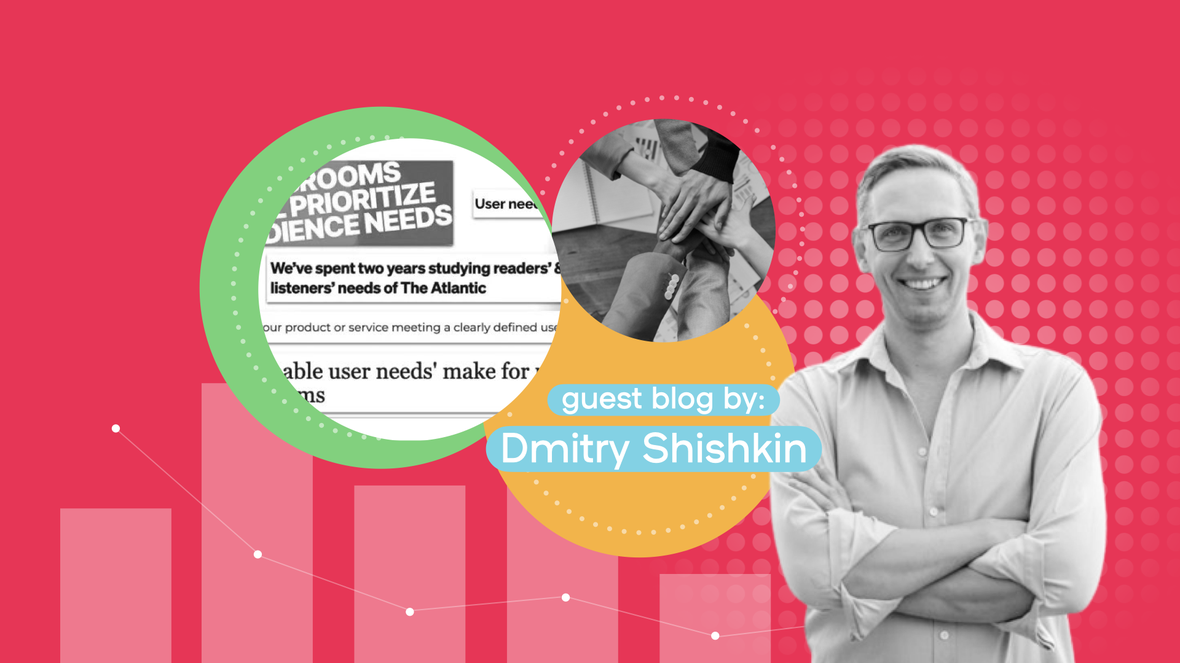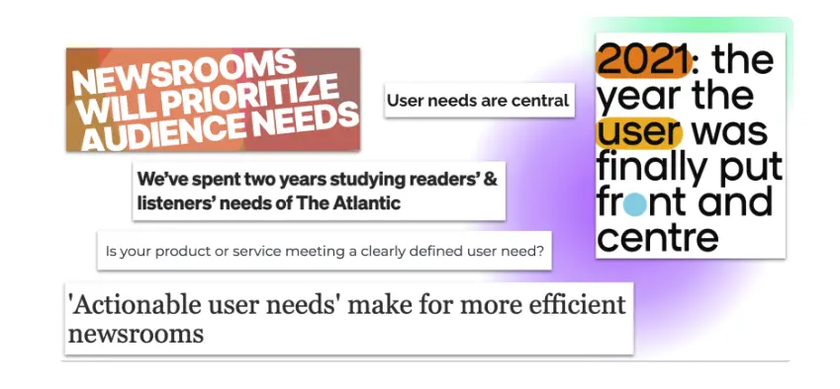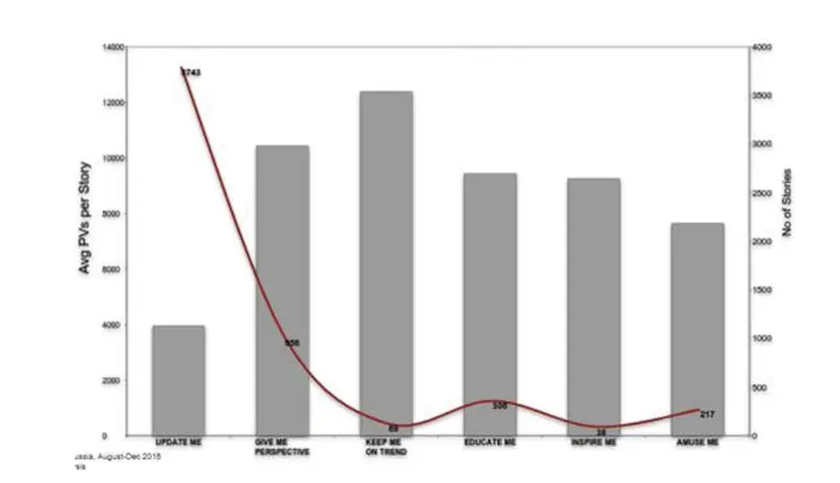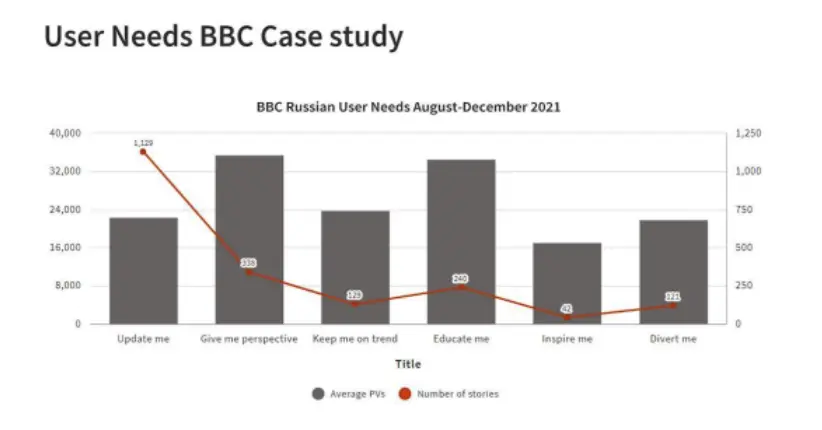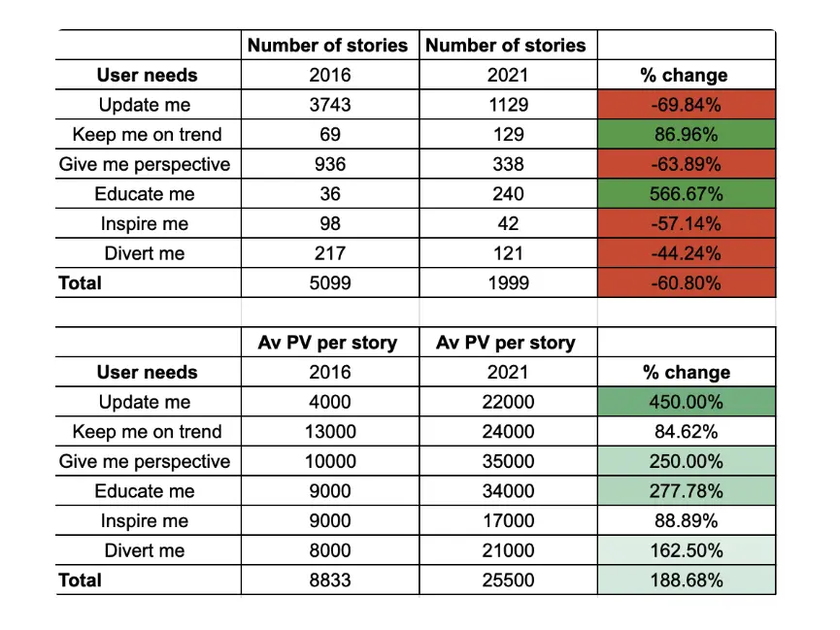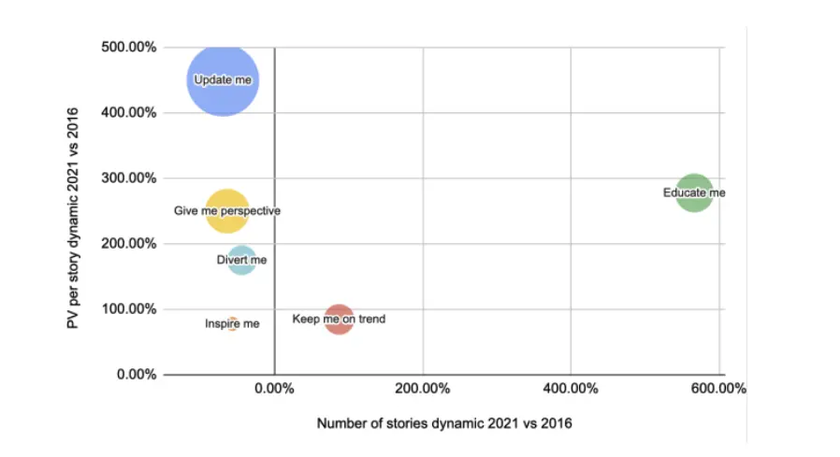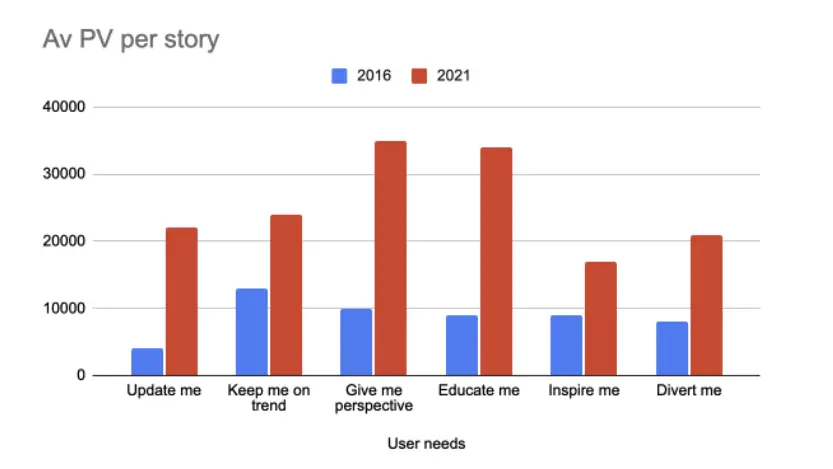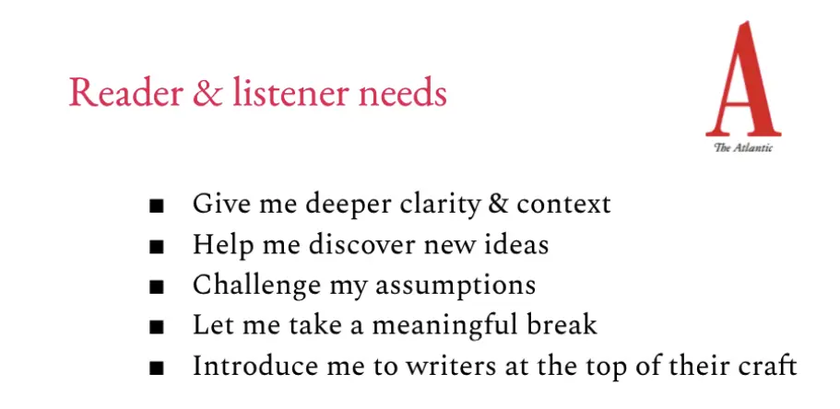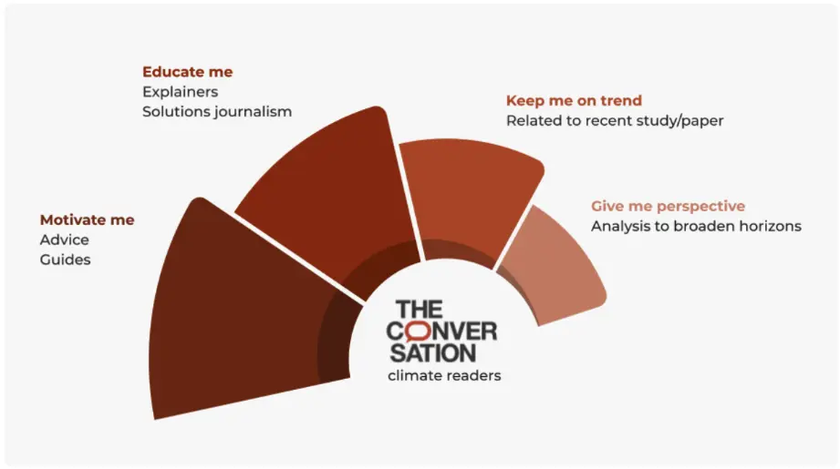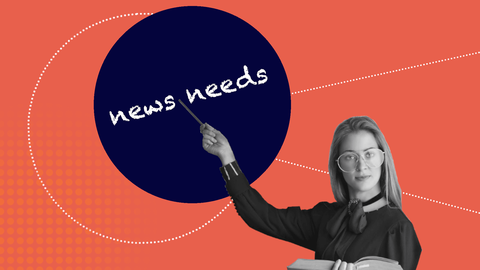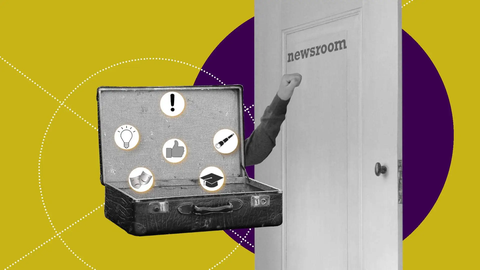UPDATE: We created a new User Need Model in March 2023. Check our page and download the whitepaper if you're interested! Or get started right away.
5 years ago, the user needs model for news was developed by BBC World Service and Dmitry Shishkin. Together with Dmitry, we then started working on a smartocto user needs project and we quickly realised that 'the follow-up', where editors cover the facts from a different perspective and keep their readers engaged for longer, is absolutely key. That's why we created a smart notification system to help editors choose the right editorial approach for their next stories. In this guest blog, Dmitry takes us on a trip down memory lane and describes the impact the model has had ever since it came into existence.
--------------------------------
User needs in content publishing: the slide that started it all, five years later
Meaningful and sustainable growth opportunities in digital publishing come when newsrooms satisfy their audiences’ distinctive content user needs by properly understanding and utilising their market role and purpose. In this piece, I go back to the original case study from 2016 and the slide that started it all. I always wanted to see what happened since. It’s been fascinating - read on to find more.
News needs. Audience needs. Content user needs. Different words that describe the same concept. A significant trend in the publishing sector is at the core of its engagement problem. In short, you tell a story you want to tell, but you do it from the angle your audience values - as simple as that.
Those newsrooms that adopted a user needs-based content strategy to their work (I wrote about the concept here, here and here) are more effective internally and distinctive externally. They produce less unneeded content, gain more audience, and engage it better - in short, they really utilise their product-market fit. Media organisations that are aware of why they exist in the market, what their USP is, and how to serve their niche audience better win, and those that don’t first drift and ultimately lose.
We did a webinar about the User Needs Model 2.0. Watch the recording!
